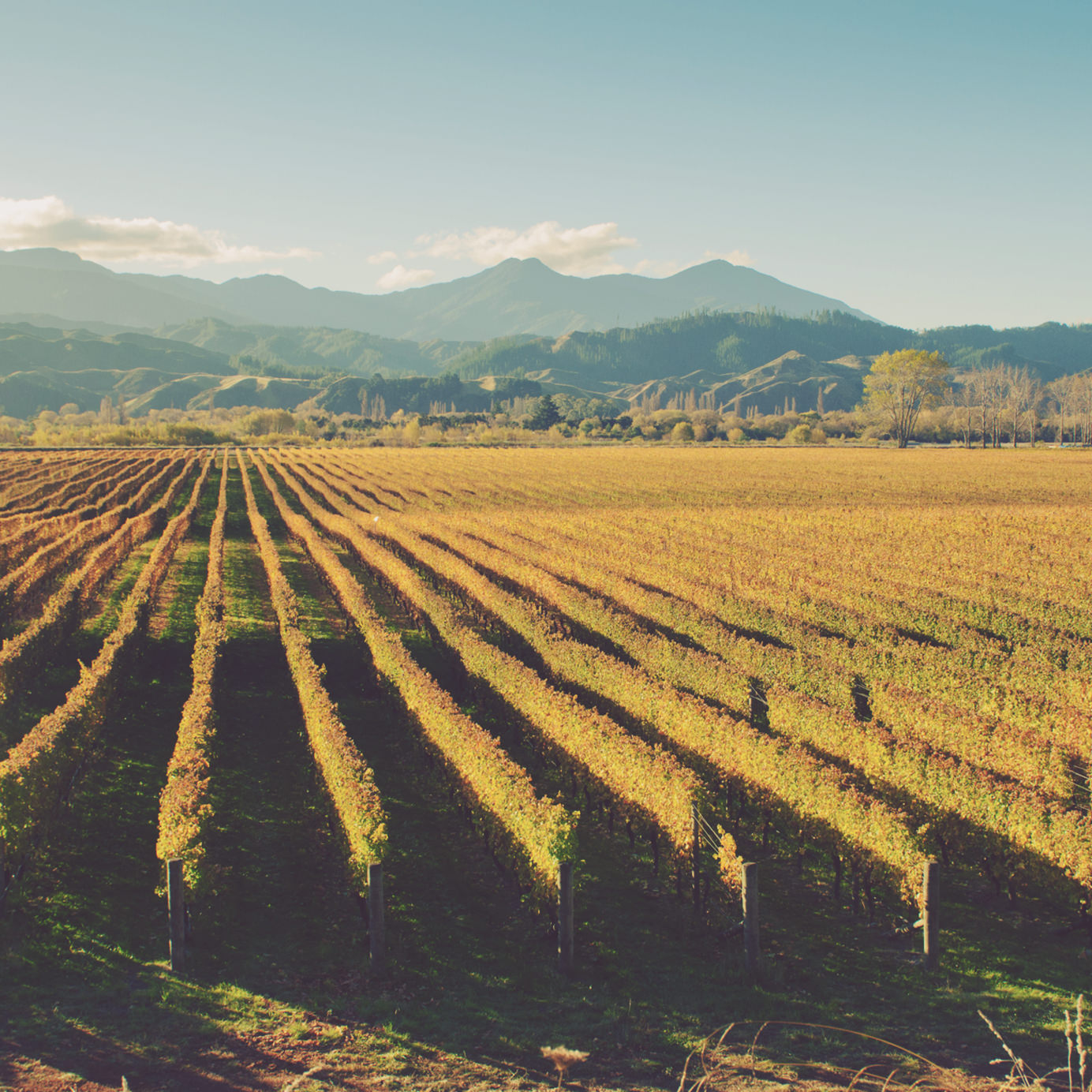Love it, hate it, or love to hate it, New Zealand Sauvignon Blanc is a powerful thing. The grape occupies two-thirds of the country’s vineyards, accounting for a whopping 86 percent of its wine exports. And as a New Zealand national, no wine has ever invoked the feeling of home for me quite like a grassy, herbaceous glass.
The pungent wine that has been famously likened to “cat’s pee on a gooseberry bush” is grown across New Zealand. It is especially big business in Marlborough, where the dry, alluvial soils and cool, sunny climate create a perfect storm of conditions for growing Sauvignon Blanc (or, as it’s known colloquially, Savvy).
The first Sauvignon Blanc vines were planted in Auckland in the 1960s, and then in Marlborough in the 1970s. These wines lacked the subtlety of their French equivalents, Sancerre, and certainly white Bordeaux. These wines were loud and upfront, full of fresh pineapple, smelly armpits, and tomato leaf. Famed wine writer George M. Taber once recalled a critic saying that drinking Marlborough Sauvignon Blanc was “like having sex for the first time.”
Savvy has served as the backbone (and, sometimes, punch line) of the New Zealand wine industry for more than 30 years, but it is not the only game in town. Increasingly, winemakers from Marlborough to Waiheke Island are making excellent wines in the diverse soils of this cool, green country.
Pinot Noir
It’s grown in nearly every wine-producing country worldwide, so naturally Pinot Noir has made itself right at home in NZ. The classic Pinot-friendly terroir features sunshine, cold nights, and clay soils, and, as it turns out, New Zealand has several of them. Savvy’s home, Marlborough, is one of them, as are the bucolic regions of Martinborough in the North Island and Canterbury in the South.
But it is the big, bold wines of Central Otago that have wine collectors climbing all over each other. Pinot has found a foothold here, at the convergence of several mountain ranges and a lot of very beautiful (and very cold) lakes. Felton Road and Mount Difficulty make wines in the prestigious subregion of Bannockburn, while Rippon’s tasting room in Wanaka is widely considered to have the best view in the whole world.
Bottles to try:
Felton Road Bannockburn Pinot Noir. Average price: $50
Rippon Mature Vines Pinot Noir. Average price: $44
Ata Rangi Pinot Noir. Average price: $60
Chardonnay
The undisputed king of whites has made its way from Montrachet to just about every corner of the wine world, so it’s no surprise that New Zealand, a country noted for its Pinot, is cranking out some very fine examples of Burgundy’s favorite white grape.
The bulk of New Zealand Chardonnay comes from the northern end of the country, where the weather is a bit warmer and the soils are incredibly diverse. In Gisborne and Hawke’s Bay, Chardonnay is everywhere, making wines that smell like buttered toast with marmalade. In Marlborough, there’s plenty of citrus and pineapple. Meanwhile, in Kumeu and Waiheke Island, on the outskirts of Auckland, things are a bit more Burgundian, with Kumeu River making some of the nicest white wines the country has to offer.
Bottles to try:
Kumeu River Estate Chardonnay. Average price: $28
Craggy Range Kidnappers Vineyard Chardonnay. Average price: $21
Riesling
If Marlborough were to start again today, Sauvignon Blanc would undoubtedly play second fiddle to Riesling. The long, cool growing season makes a magnificent terroir for Riesling that tends toward off-dry and perfectly balanced.
Now, in addition to several excellent Riesling vineyards in Marlborough, it is also planted in abundance in Central Otago, Nelson, and Canterbury, making a whole range of wines that even a German winemaker would love.
Bottles to try:
Pegasus Bay Riesling. Average price: $25
Neudorf Moutere Riesling. Average price: $26
Forrest The Doctor’s Riesling. Average price: $15
Syrah
New Zealanders are always out to prove that anything Australia can do, they can do better. So in the last decade or two, New Zealanders have been planting a lot of Syrah and making a lot of very good wine with it, particularly in the Gimblett Gravels subregion of Hawke’s Bay, where the soils are stony and dry and the sunshine is plentiful.
Of course, it barely resembles the jammy, fruit-stuffed wines of the Barossa Valley. Instead, NZ Syrah shows off the lighter, more floral and herbaceous side of the grape. That’s not to say there’s no fruit — there’s plenty. It’s just that it’s plums, rather than plum jam.
Bottles to try:
Trinity Hill Syrah. Average price: $26
Craggy Range Le Sol. Average price: $79
Albarino
It was probably just a matter of time before someone realized that a grape that did well in the cool, rainy region of Galicia in northwest Spain was probably going to fare very well in New Zealand. Albarino is one of the most recent additions to the NZ vineyard, and an increasing number of intrepid producers are giving it a go.
Bottles to try:
Cooper’s Creek Bell Ringer Albarino. Average price: $15
Nautilus Estate Albarino. Average price: $19
Of course, Albarino is just the beginning. As NZ consumers get a little more daring, so do producers, and all of a sudden varieties like Gruner Veltliner and Chenin Blanc are appearing more and more on labels. Sauvignon Blanc will always be our flagship grape, but there is plenty more to explore in our armada.
